Phenotypic differences of persistent airflow obstruction in young vs old subjects in the general population
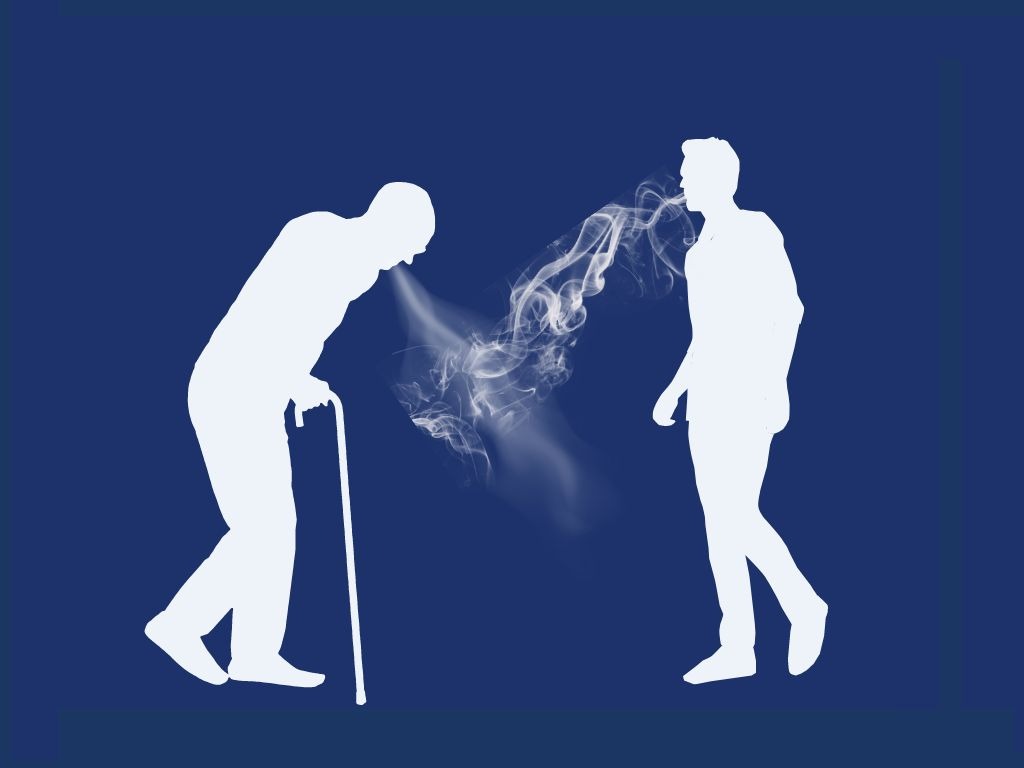
Background: Persistent airflow obstruction in young and older individuals
In the article titled «Phenotypic differences of persistent airflow obstruction in young vs old subjects in the general population», the focus is on comparing the phenotypic differences of Persistent Airflow Obstruction (PAO) in young (<50 yrs) and older (>70 yrs) subjects.
Method: Young and elderly individuals with PAO comparison
Young and old subjects with PAO were contrasted in the LEAD cohort, a single-centered, observational, population-based study in Vienna (Austria).
Results
Young subjects with PAO were more frequently current smokers, had a higher diffusion capacity, a more prevalent diagnosis of asthma, lower levels of circulating inflammatory markers and less dyspnea than old PAO.
When stratified by their cumulative smoking exposure, we observed that old PAO with ≥10PY (Pack Years) had significantly reduced FEV1 vs <10PY, and that young and old PAOs with ≥10PY had lower DLCO, reduced asthma prevalence, more symptoms and more inflammatory markers than respective <10PY.
Conclusions: Significant phenotypic differences between young and old individuals with Persistent airflow obstruction
The conclusion underscores that while PAO in the general population is largely mild, there are significant phenotypic differences between young and old individuals with PAO. A significant fraction of young PAO did not have substantial smoking history. In contrast, young PAO with ≥10PY are more similar to old PAO
Authors
Caspar Schiffers, Rosa Faner, Marie-Kathrin Breyer, Sylvia Hartl, Robab Breyer-Kohansal, Alvar Agusti.
Read more details at
Noticias relacionadas
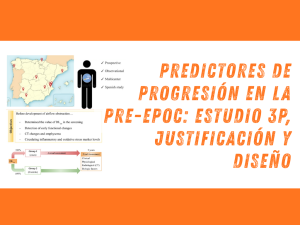
Predictores de progresión en la pre-EPOC: estudio 3P, justificación y diseño
Conoce el estudio 3P que analiza los factores que predicen la progresión de la pre-EPOC a EPOC en fumadores con espirometría normal.
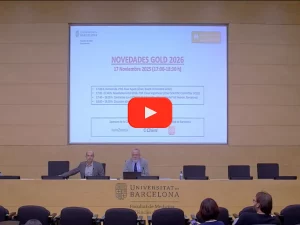
Vídeo de la Presentación de las Novedades GOLD 2026
Video de la presentación «Novedades GOLD 2026», en el que se trataron, entre otros aspectos: cambios en diagnóstico de la EPOC, tratamiento, comparativa con GESEPOC, etc.
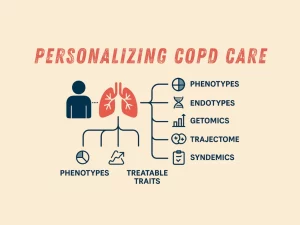
Personalizing COPD care: phenotypes, endotypes, GETomics, the the trajectome, syndemics and treatable traits
Discover how personalized COPD care integrates phenotypes, endotypes, GETomics, trajectome, syndemics, and treatable traits to improve patient outcomes.
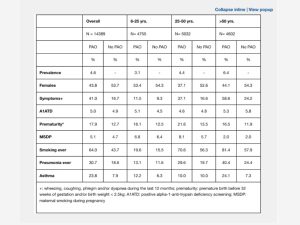
Etiotypes of persistent airflow obstruction in the general population in different age bins
The GOLD 2023 report identifies different causes (etiotypes) of COPD. Their prevalence in individuals in the general population with persistent airflow obstruction (PAO) is unknown.
Artículos
COPD
- 759578·Alberto Papi et Al.-Relationships between symptoms and lung function in asthma and/or chronic obstructive pulmonary disease in a real-life setting: the NOVEL observational longiTudinal studY
- 759785·Richard Beasley et Al – Prevalence, Diagnostic Utility and Associated Characteristics of Bronchodilator Responsiveness
- 759788·Alvar Agustí, Rod Hughes, Eleni Rapsomaki, Barry Make, Ricardo Del Olmo, Alberto Papi, David Price, Laura Benton, Stefan Franzen, Jørgen Vestbo, Hana Mullerova – The many faces of COPD in real life: a longitudinal analysis of the NOVELTY cohort
- 759883·Alberto Papi, Rosa Faner, Ian Pavord, Federico Baraldi, Vanessa M McDonald, Mike Thomas, Marc Miravitlles, Nicholas Roche, Alvar Agustí. – From treatable traits to GETomics in airway disease: moving towards clinical practice
- 768799·Surya P Bhatt Richard Casaburi Alvar Agusti et Al. Chronic obstructive pulmonary disease: hiding in plain sight, a Statement from the COPD Foundation Medical and Scientific Advisory Committee
Estudios
- 759397·Alberto Sandiumenge et Al.-Systemic Inflammation Differences in Brain-vs. Circulatory-Dead Donors: Impact on Lung Transplant Recipients
- 759578·Alberto Papi et Al.-Relationships between symptoms and lung function in asthma and/or chronic obstructive pulmonary disease in a real-life setting: the NOVEL observational longiTudinal studY
- 759689·Kilian Vellvé et Alt.- Pulmonary vascular reactivity in growth restricted fetuses using computational modelling and machine learning analysis of fetal Doppler waveforms.
- 769273· Singh D, Criner GJ, Agustí A et al. Benralizumab Prevents Recurrent Exacerbations in Patients with Chronic Obstructive Pulmonary Disease: A Post Hoc Analysis
- 769685·Nuria Olvera et Al.- Lung Tissue Multi-Layer Network Analysis Uncovers the Molecular Heterogeneity of COPD
Imagen obtenida en Canva Pro.
